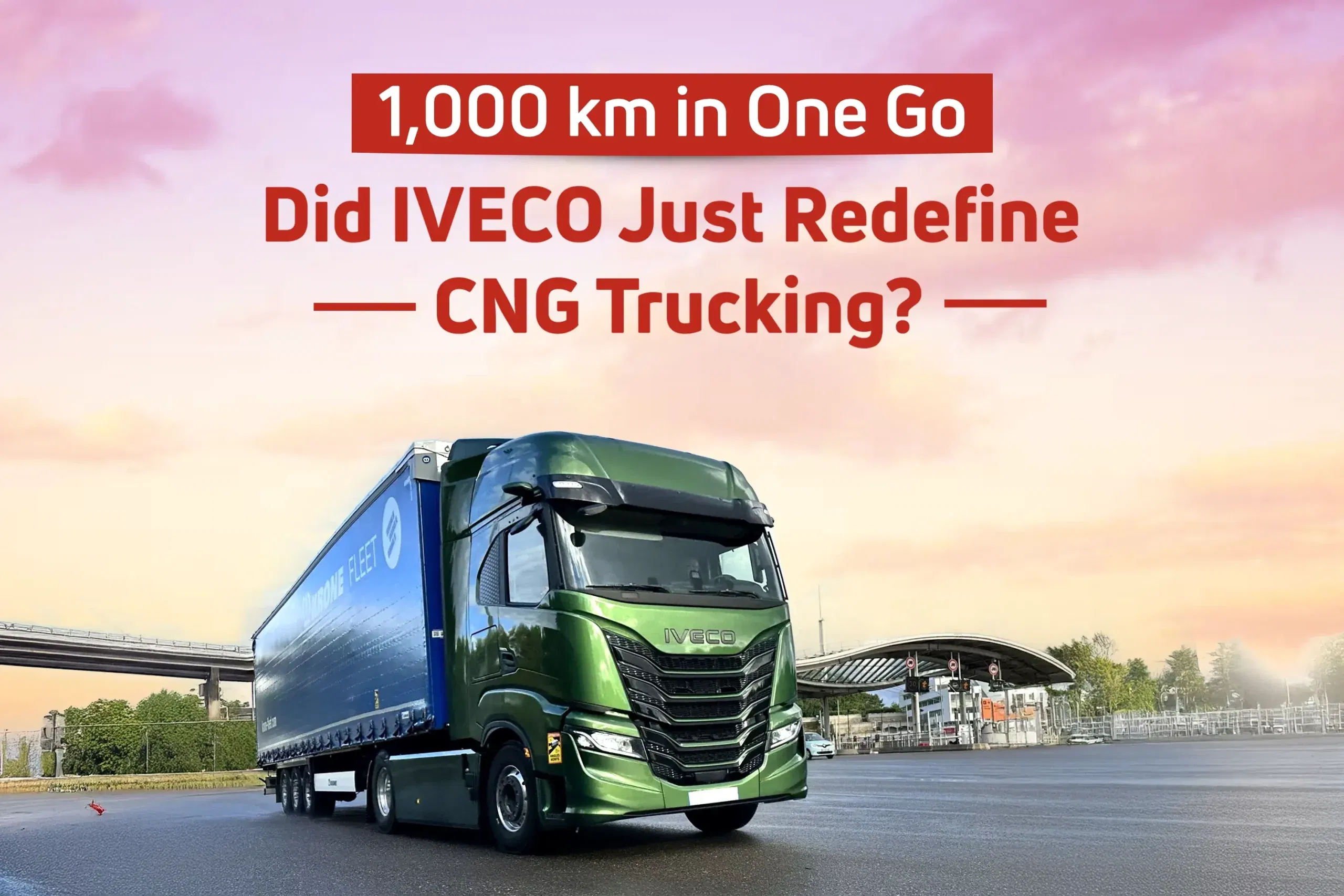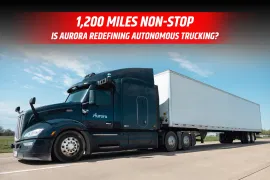The push toward lower-emission freight transport often depends on technologies that balance range, efficiency and practicality. A recent long-distance test in Europe placed the IVECO S-Way CNG in that discussion, as the vehicle completed 1,000+ km on a single CNG refill under real-world highway conditions. The result places the natural-gas truck among the longest-range CNG-powered options currently operating in the heavy-duty truck segment.
The test route, which spread across mixed European terrain, required stable cruising speeds, controlled payload and repeatable conditions. Engineers monitored consumption behaviour closely, keeping the analysis centred on how a natural gas truck behaves during long-haul duty cycles where fuel density and engine efficiency often drive the outcome. Through this approach, the test produced data that confirms how the vehicle’s CNG long-range capability can remain consistent even when the route includes gradients and varying traffic flow.
An important component of this performance is due to the engine's combustion calibration. It is predicated on delivering reliable torque while providing clean burn properties as well. The mapping keeps the load stable so that the vehicle is able to maintain speed with minimal throttle variation. This generated behaviour and fuel efficiency pattern are what long-haul operators want. This enables CNG truck mileage to compete with diesel long-haul trucks, particularly when supported by an unbroken natural-gas supply chain.
Part of the larger context is the growth of Europe’s gas refueling infrastructure. Industry figures indicate the continent now operates approximately 4,300 bio-LNG stations and 800 BioCNG stations, one of the most developed alternative fuel networks in the world. The density of the stations is concentrated around major freight corridors, providing a level of less uncertainty for CNG and LNG vehicle route planning. Regulatory changes and the engagement of the private sector signal further growth of the station network, with an estimated increase of around fifty stations by 2026. While the specific numbers majorly come from the industry, it suggests positive growth for the biomethane ecosystem in the region.

The role of biomethane in this transition continues to be underscored. The fuel, generated locally via processing organic waste, has the potential to reduce CO₂ emissions by as much as 95% relative to diesel; it can considerably cut back emissions of particulate matter and nitrogen-oxides (NOx), while still enabling long-haul fleets to lower environmental impact without significantly altering their operating practices. For operators that desire range but are not yet ready to completely pivot to battery-electric or hydrogen-fuel formats, biomethane provides a helpful intermediate, remaining similar and comfortable in format, yet emissions are generally lower.
The S-Way’s test result also highlights how alternative-propulsion trucks behave in sustained-operation environments. Long-haul movement demands cabin comfort, predictable refueling intervals and drivetrain stability during continuous highway duty. Engineers structured the validation to reflect these expectations, keeping the truck’s interior ergonomics, noise behaviour and thermal management under observation during the journey. While these factors do not directly shape the mileage figure, they influence how viable such vehicles become in the commercial truck and commercial vehicle market, where long hours on the road form the majority of operational patterns.
IVECO’s engineering leadership interprets the milestone as an indicator of where natural-gas technology currently stands. Giandomenico Fioretti, Head of Alternative Propulsion Business Development at the company, noted that the achievement aligns with the push toward sustainable, efficient transport solutions. His statement emphasised that a 1,000 km single-refill range demonstrates natural gas as a functional alternative to diesel in long-distance operations, especially at a time when freight decarbonisation remains a priority for European regulators.
Conclusion
The 1,000-km result offers one piece of evidence in a larger trend: long-haul freight is moving toward cleaner fuels, but the transition will occur through diverse pathways. CNG and biomethane, while not new, demonstrate that incremental engineering improvements and infrastructure growth can push established technologies into new performance territories. The S-Way CNG’s achievement reflects this direction, presenting natural-gas trucking as a practical, lower-emission option capable of meeting long-distance demands without major logistical disruption.
For more articles and news, stay updated with 91trucks. Subscribe to our YouTube channel and follow us on Facebook, Instagram and LinkedIn for the latest videos and updates from the automotive world!
Also Read:
Hyundai Motor–PlusAI Autonomous Hydrogen Truck Featured in TIME’s ‘Best Inventions 2025’
Sustainable Cement Logistics: Eicher Trucks and Buses Unveils Latest Models at 15th Cement Expo
Web Stories
Latest Trucks News
Categories
91trucks is a rapidly growing digital platform that offers the latest updates and comprehensive information about the commercial vehicle industry.









